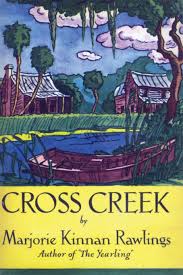Marjorie Kinnan Rawlings
Listen to the Recess! Clip
| Author | Kevin Shortsleeve |
| Air Date | 8/8/2002 |

Marjorie Kinnan Rawlings Transcript
Certain writers are known for their sense of place. There is Mark Twain and his muddy brown, strolling, Mississippi River, or Jack London and his icy-white, bone chilling, north woods.
Less prolific perhaps, but no less able to convey a deeply rich sense of place was Marjorie Kinnan Rawlings, who lived twenty-five years among the palmetto scrubs and sandy, spring-fed streams of North Central Florida. In an old Cracker cottage shaded by moss-encrusted ancient oaks, Rawlings wrote two books that will assure that old north Florida will never be forgotten–Cross Creek, a collection of anecdotes and ramblings about life in that small town and The Yearling, a Pulitzer Prize winning novel about settlers in the region in the 1870s–and the young boy, Jody Baxter, who befriends an orphaned fawn.
Published in 1938, The Yearling is a coming of age story, touching, poignant, and of universal appeal to any child or adult who has ever faced adversity and learned to live with pain. But as critic Agnes Perkins points out, The Yearling succeeds not only because it is touching “but also because of its strong characterizations of the independent Florida [people]… and its vivid evocation of the wild beauty of the Florida scrub country.”
And it is precisely this ability of Rawlings’ to convincingly and tastefully convey a sense of place that writers from all over the country attend the annual Marjorie K. Rawlings, Writing the Region Conference each July. In honor of the late writer, hopeful authors convene in an old Spanish style mansion in Gainesville to share notes on what it means to capture a sense of one’s home with pen and paper.
Especially in Florida, perhaps, there is a sense of urgency to such a project – where urban sprawl proves so difficult to manage, and where entire counties are transformed into picture-perfect vacationland amusement centers–the residents and writers of Florida know what it is to see entire regions transformed in a lifetime.
Like Rawlings, the writers who meet at the conference named in her honor, look about themselves and find value, beauty and history in everyday life. Screenwriter Paul Osborn, in his dedication to the 1946 film version of The Yearling, described how vitally we are connected to our land through the acts of the everyday-ancestor who came before us. He wrote, “For us, they hungered and toiled. Their endurance is our prosperity. Their struggle is our freedom. From their dust, we spring. Reaping the great harvest of their lives and works, we remember them with blessings.”
Works consulted:
“Rawlings, Marjorie K.” Something About the Author, Volume 100. P. 205 MGM Home Video, The Yearling, 1946.
Rawlings, Marjorie K. The Yearling, 1938, Aladdin Paperbacks.